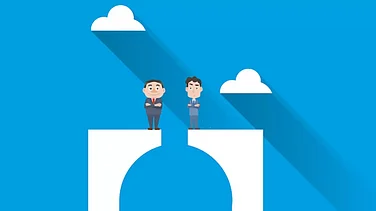Zoho decided to build a business email solution in 2004, when the company was a small start-up based in Chennai. At the time, Yahoo was a popular email provider, Gmail was launched the same year, and Zoho was called AdventNet. In 2005, we entered the software-as-a-service (SaaS) space with our first product, Writer, an online word processor (much before Google Docs was born).
Over the next 15 years, we built 45 products from scratch, rebranded the company as Zoho Corp to reflect our cloud focus, and helped make Chennai India’s SaaS hub. Today, our enterprise collaboration suite (Zoho Workplace), which includes Zoho Mail, Writer, and seven other products, boasts 15 million users across more than 150 countries. In the last quarter, 25% of Zoho Workplace’s new customers shifted from G-Suite and Microsoft. It recently won the Aatma Nirbhar Bharat App Innovation Challenge conducted by the government in the “Office” category. We are, in essence, “Made in India; Made for the World”.
ALSO READ: Swadeshi Movement Part 2
During my stint, I witnessed competitions come and go, and worked with amazing technocrats and designers who honed our product suite with unflagging zeal and enthusiasm. Hopefully, by sharing some tips based on Zoho’s own successes and even unromantic hardships, start-ups can gain better insights on their journeys ahead.
Growing talent: When you start an ambitious product like Zoho Mail with people who are new to the domain, the only assured available resource is time. Domain expertise isn’t available off-the-shelf, and most relevant expertise accrues only from battling from the trenches for years.
ALSO READ: Inequality Paradox
During the formative years, we kept the team small so that we could sustain R&D investment, and patiently home-brewed talent and domain expertise. Even today, in most of the modules that make up the Zoho Mail ecosystem, it is a small group of passionate people who relentlessly spend decades to understand and learn before they excel in the domain.
As one of the first high-tech product development companies out of India, even software talent wasn’t easy to come by. We decided to work with fresh graduates, and train them on techniques, as also provide them exposure to the specific domains. This laid a strong foundation that helps us even today. We focus on raw talent, and nurture them using a gentle on-boarding environment that gets them skilled in the domain and the existing product before assigning them their first challenge.
ALSO READ: Land Of Billion Entrypreneurs
Whether you are a beginner or professional, when it comes to innovative software development on the cutting edge, mistakes are bound to happen. We strive to look at each of these slip-ups as a learning opportunity and try to focus on how to correct and improve rather than play the blame game. This is where senior managers bring to bear their wisdom in having faced situations like these, and put systems and processes to avoid these in the future. The aim is not to preclude the possibility of any mistakes. We know that choking experimentation stunts innovation. We aim, instead, to be watchfully agile and imbibe lessons for the future from every learning opportunity.
Conceiving and nurturing: During the first few years of development, we were focused on strengthening our foundation rather than on adding more bells and whistles to the product. We understood, early on, that prioritising our efforts is the surest way forward given the compact size of our team. Our top priorities were stability and reliability of the system, given how critical email is to a company. Once we gained enough confidence, we focused on adding more functionalities and innovations to the product suite.
ALSO READ: Bharat Inc.
Doing something new is much easier than changing the existing structure, optimising, and improving it. When you work on a product for more than a decade, you are often caught redoing portions of a big puzzle, making it efficient and reducing overheads. It also needs a patient team who can understand and appreciate the intention behind these changes, a team that follows the same pattern in other aspects of the product development lifecycle. This results in huge expectations on the quality assurance team, as the core engine has completely changed, though the exterior appears the same. Surely though, these investments in development/discipline yield great results as the product matures.
As early as in 2008, even when our product was not fully functional, we started using it as the email platform for the company. As a first step, our changes were made available to employees first before exposing them externally. The changes were critically examined, opinions were voiced in our internal forums, and as product owners we had to defend our choices and explain our stance. Heavy usage and copious feedback helped us iron out issues, and polish the product long before the first customer from the outside world set eyes upon it. Never underestimate the power of internal dog-fooding!
ALSO READ: ‘I’ Of The Storm
Celebrating small milestones: Building for deploying on the cloud gives us the advantage of making seamless updates to the service without inconveniencing the users. There were no big launches with planned fanfare. It was always small milestones, which started once a month, and soon increased in frequency to biweekly, and now to daily updates. It is usually hidden from external users until it is completely ready. We don’t obsess too much about project timelines and delivery schedules, and instead focus our energy on product management and getting the feature exactly right. This continuous deployment and the flexibility over launch schedules give us the elbow room to perfect our offerings.
From overall team size to marketing budget and technology adoption, paying attention to costs and keeping them low automatically gives businesses a longer runway to taxi. Once you crack the core problem, the product gets into a more conventional lifecycle, after which you can always staff up and fill the missing pieces of the puzzle.
Build expertise as the product grows and let the stakeholders focus deeply on a narrow area so that they gain the big picture over time. This not only helps in ensuring the quality of the product but also in formulating some fundamental convictions and opinions that drive the future direction, and resolve dilemmas that you are bound to encounter as customers pull it in various directions.
Focus on differentiation: At the end of the day, a product can stand out only if it unique value to offer. Besides understanding the immediate customer needs and solving their problems, it is important to envision market, technology, and usage trends, and to find ways to offer unique value to users through meaningful innovations. It could be a packaging innovation like Chik Shampoo or a product innovation like the one by Arunachalam Muruganantham. These innovations continue to inspire us while reminding us of the long path ahead.
Real happiness, they say, is not in reaching the destination but in enjoying the journey, and it has been a truly enjoyable journey for us. We hope to cover a long path serving more people in the coming years. For the chief technical architect of Zoho Mail, Jagan R, and for me, the journey was made doubly sweet by the amazing people we have had the good fortune of working with. India needs more companies that are willing to run the product marathon with the hope of empowering billions to chase their own dreams.
(Views are personal)
Radha Vembu Owner, Zoho Corp, and Product Manager, Zoho Mail





















